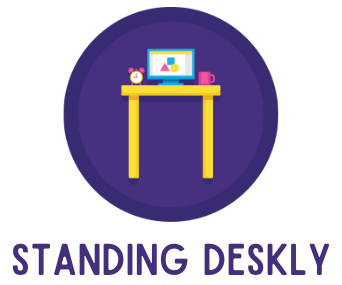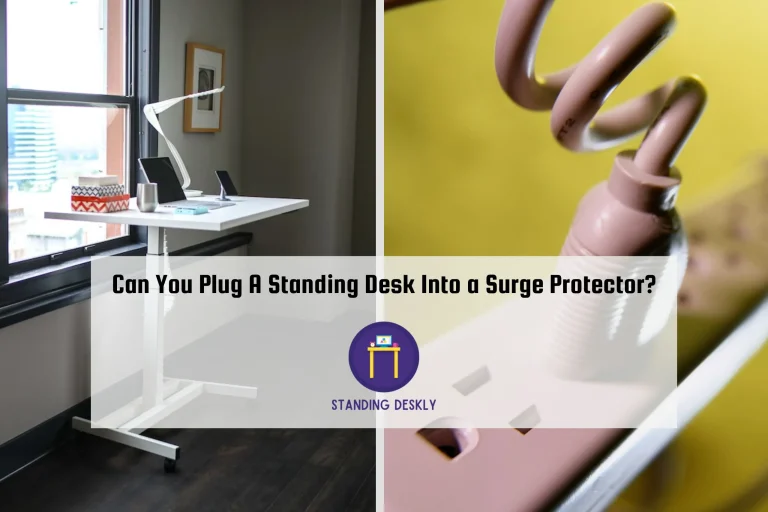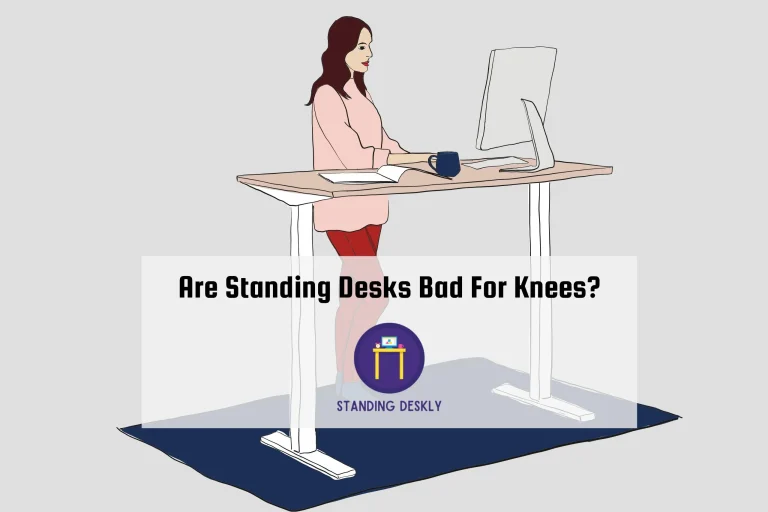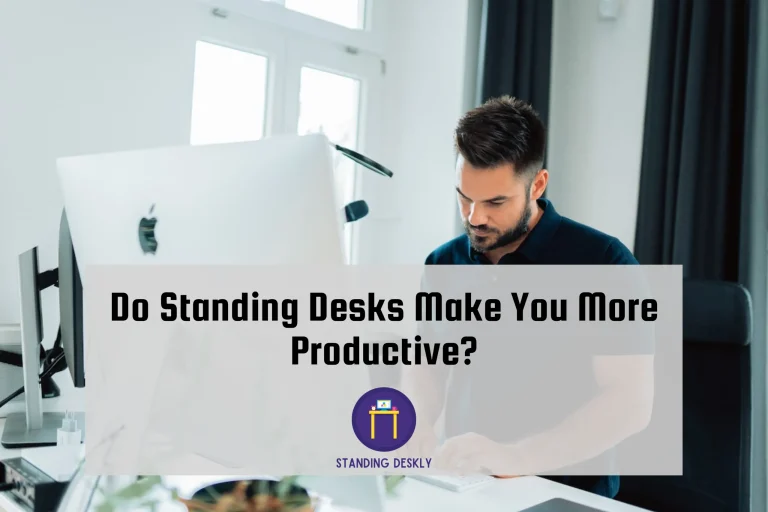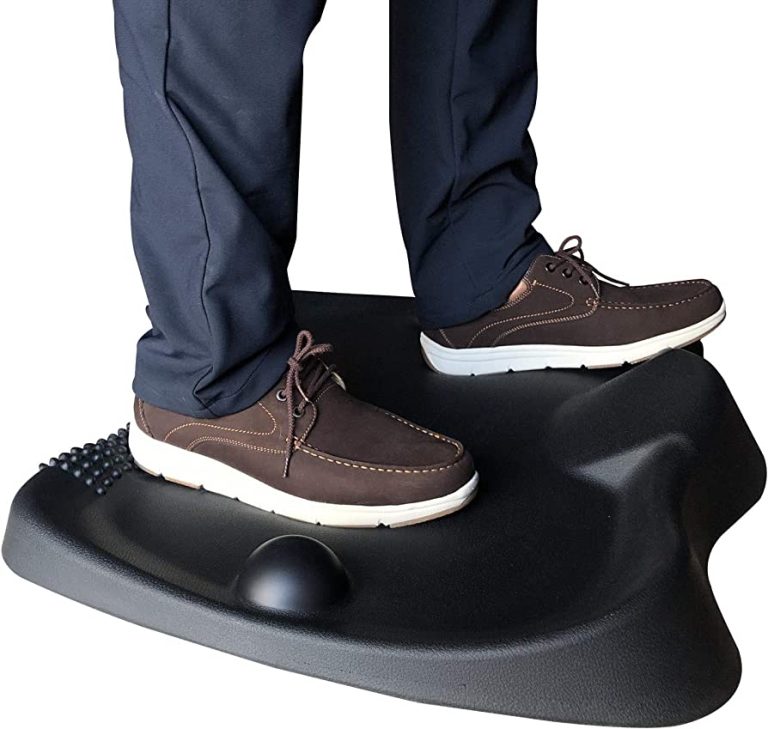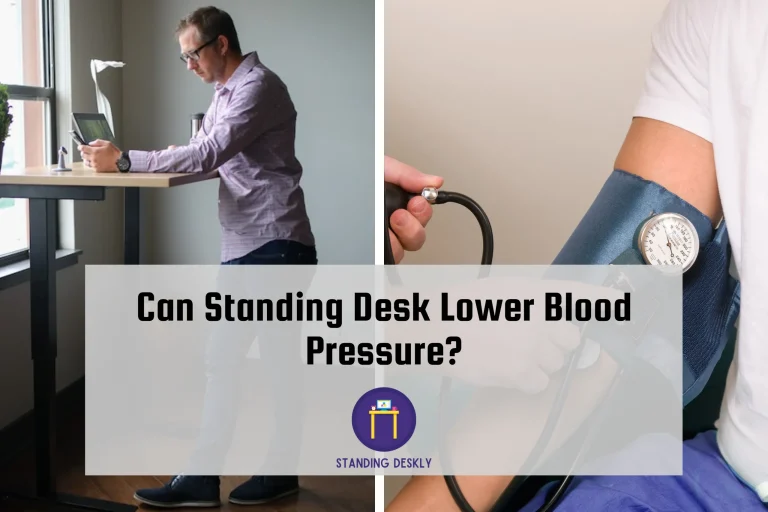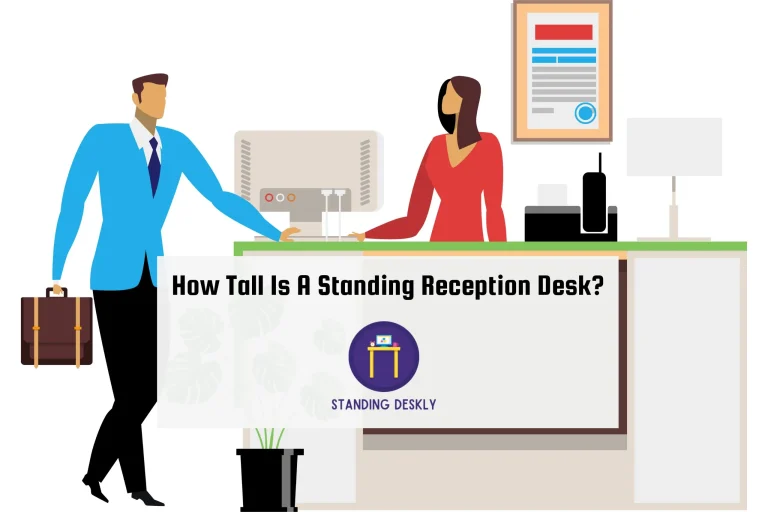Do Standing Desks Cause Varicose Veins?
The answer is not that simple, as using a standing desk alone isn’t likely to lead to varicose veins. However, prolonged periods of standing could potentially exacerbate the problem if you are already prone to vein issues. So let’s break it down for you.
Varicose veins happen when the valves in your veins become weak, causing blood to pool and the veins to become enlarged and twisted. This can result from genetic factors, obesity, pregnancy, or occupations that require long hours of standing.
Standing desks can be beneficial to your overall health, especially when compared to prolonged sitting. They encourage better posture, increase energy levels, and improve circulation. But if you spend hours standing in one spot without moving, you could be putting extra pressure on your veins, which may worsen varicose veins symptoms.
To ensure you’re using your standing desk in a way that won’t contribute to varicose veins, follow these simple tips:
1. Keep moving: Instead of standing still for long periods, try taking short walks, changing your stance, or incorporating calf raises and leg stretches into your routine.
2. Make use of a sit-stand desk: This allows you to switch between sitting and standing throughout the day, reducing the strain on your veins.
3. Wear compression socks: These can help improve blood flow and decrease the risk of varicose veins.
So, while standing desks are not the direct cause of varicose veins, it’s crucial to take these preventive measures to ensure your standing experience remains a healthy one.
Understanding Varicose Veins:
Have you ever considered getting a standing desk for your workspace, hoping it might improve your health? While standing desks have become popular as an alternative to sitting all day, some studies have shown that constantly standing might bring a new set of health issues, including an increased risk of varicose veins. So, let’s understand what varicose veins are and how standing desks might impact them.
Varicose veins occur when your veins, especially those in your lower legs, are not able to return blood to your heart effectively. This can cause the veins to become swollen, twisted, and visible under the skin. Factors that can increase the risk of developing varicose veins include prolonged periods of standing, tight clothing, and weight gain.
Now, when it comes to standing desks, using them might help in reducing the risks associated with sitting all day, such as heart disease and weight gain. However, prolonged standing can overwork your back, legs, and feet muscles and make it harder for the veins in your lower legs to pump blood back to your heart. This is why standing desks might increase your risk of developing varicose veins.
So, what’s the solution? The key is to find a balance. Using a standing desk that can be easily adjusted will allow you to alternate between sitting and standing throughout the day. Just ensure that you follow expert recommendations and change positions every 20 to 60 minutes to minimize your risk of developing varicose veins or any other health issues associated with prolonged sitting or standing.
Varicose Veins: A Common Issue Among Standing Workers
You may have noticed that many people who work for extended hours on their feet, such as chefs, hairdressers, and construction workers, often develop varicose veins. While standing all day can be a common cause of this issue, there are other factors to consider as well. It’s essential to understand the relationship between prolonged standing and the development of varicose veins, so you can take the right steps to maintain the health of your legs.
Firstly, let’s understand that varicose veins form when the veins in your legs become swollen and twisted due to weak or damaged valves. These valves normally help the blood flow against gravity to reach your heart.
However, when they don’t function correctly, blood can pool in your veins, causing them to swell and appear raised and discolored. Prolonged standing contributes to this problem by increasing the pressure on your veins and making it harder for blood to flow back to your heart.
Now, this doesn’t mean that you should sit all day – prolonged sitting has its own set of health risks, such as increased chances of heart and kidney disease. What you should aim for is a balance between sitting and standing. It’s a good idea to change your position every 20 to 30 minutes, and make sure to take small walking breaks throughout your day.
Also, maintain an active lifestyle outside of work, as regular exercise can improve your blood flow and help prevent varicose veins. By taking these small steps, you can keep your legs healthy and significantly reduce the risk of developing this painful and unsightly condition.
Studies on standing desks and varicose veins
Do standing desks contribute to varicose veins? Let’s take a look at the facts. Recent research has shown that a sedentary lifestyle can increase the risk of several health conditions, such as obesity, Type 2 diabetes, cardiovascular disease, and even early death. When you sit for long periods, your legs receive less circulation, which can lead to the development of varicose veins and spider veins in some cases. Prolonged sitting may even cause a dangerous blood clot in your leg.
As a response to these concerns, many people have turned to standing desks, thinking they promote better circulation and overall health.
However, recent studies have cast doubt on the original research, suggesting that the link between sitting and these health risks might not be as strong as initially thought. Additionally, standing at work does not offer the same benefits as walking or exercising.
In fact, it’s been found that standing for long periods can also lead to various issues, such as pain in the feet, knees, hips, and lower back. According to a study in the journal of Occupational and Environmental Medicine, people who stand or walk for more than six hours a day have a higher risk of developing varicose veins.
So, what’s the solution? A balanced approach is key. If you have a desk job, try to alternate between sitting, standing, and taking short walks throughout your workday. Most importantly, engage in regular exercise to maintain good circulation and overall health. If you already have varicose veins or spider veins, consult with a healthcare professional to discuss treatment options and ways to prevent further vein issues.
Prevention and Treatment Tips for Varicose Veins in Standing Workers
10 Prevention and Treatment Tips for Varicose Veins in Standing Workers:
1. Take walking breaks: Walking activates your calf muscles, which squeezes veins in your legs and helps blood return to your heart.
2. Use sit-stand desks: A sit-stand desk allows you to alternate between sitting and standing, reducing the pressure on your legs and preventing varicose veins.
3. Maintain a healthy weight: Obesity can worsen varicose veins, while maintaining a healthy weight can help prevent their development.
4. Exercise regularly: Well-toned muscles, particularly in the legs, help keep blood moving and discourage vein engorgement.
5. Perform calf raises: Simply lifting yourself up on your tiptoes and lowering back down can help prevent varicose veins.
6. Relax with your legs elevated: Elevating your legs helps reduce pressure on your veins and allows blood to flow more easily.
7. Avoid tight clothing: Waist-constricting garments can restrict blood flow, making it harder for blood to circulate and prevent varicose veins.
8. Limit high heels: High heels can weaken calf muscles, leading to blood pooling and swollen veins. Opt for supportive, comfortable shoes instead.
9. Wear compression stockings: Elastic compression wear can improve blood flow and prevent pooling in your veins.
10. Consult a specialist: If you’re concerned about varicose veins, speak with a medical professional about the best prevention and treatment options for you.
Conclusion: The verdict on standing desks and varicose veins
In conclusion, the verdict on standing desks and varicose veins is not entirely straightforward. While both sitting and standing for prolonged periods can increase the risk of varicose veins, there are many benefits associated with using standing desks, such as improved mood and energy levels, increased productivity, and reduced back pain. The key to reaping these benefits and minimizing the risk of varicose veins is to maintain a balance between sitting and standing throughout your workday.
To achieve this balance, it is essential to take frequent breaks and alternate between sitting and standing positions. You can make the most of your standing desk by incorporating simple exercises and stretches, such as calf raises, hamstring curls, and side lunges, which can help promote blood flow and reduce the risk of varicose veins. Additionally, ensuring proper posture while standing and sitting can also contribute to overall leg health.
In summary, standing desks do not directly cause varicose veins, but prolonged standing can be a contributing factor. Incorporating a healthy mix of sitting, standing, and movement throughout your workday, along with proper leg exercises, can help you maximize the benefits of a standing desk while minimizing the risks associated with varicose veins. Ultimately, it is important to listen to your body and find the right balance that works best for you.

I’m the author and developer of Standingdeskly, the go-to site for standing desk enthusiasts. I provide comprehensive reviews of standing desks along with office setup tips. Combining years of research and personal experience, our goal is to make it easy for you to find the perfect standing desk tailored to your needs.
